How to make the perfect Scrambler or Cafe Racer seat.
“Hey man I have a cafe racer seat off eBay that should fit my bike but I can’t get it right can you fit it for me?”
Hell. Fucking. No.
A lot of people fall into the trap of the online cafe racer seat, made specifically for your bike. In short, they usually aren’t made for your bike, they’re made for your bike with some modification to the frame and massaging of the mounting points. For the most part, they will end up costing you more with modification and yield poorer results. My advice would be to either have someone make one for you or sack up and do it yourself. It takes time but the finish is always exactly as you want it, and it will fit perfectly every time.
Get a free quote for a custom seat here
Here we will be running through:
- The parts you will need
- The mount
- Laying the base
- Covering the tail, tank and frame rails
- Fibreglass preparation
- Fibre glassing
- Removing excess
- Fitting the seat pan

This example will show a bike with a custom tail cowl which you can learn to make by Clicking Here. This method will work with any style seat whether it be on a chopper, a floating bobber seat or a brat style seat. It’s all the same just make the adjustments needed for your bike. It’s a given some seat pans are quicker and easier to make from sheet metal but for this type, I have the seat wrap over the frame so fiberglass is my weapon of choice.
What you need to make your Cafe Racer seat:
- Sheet metal to cover the seat area or similar bracing
- Cardboard off cuts
- Rasp file or blade
- Masking tape
- Micro scale (kitchen scale in a pinch)
- Measuring cups
- Paint brush (cheap and nasty is fine)
- 1 kg fiberglass resin + Catalyst
- 1m fiberglass matting (2m if you’re doing a tail cowl too)
- Glasses or goggles
- Dust mask
- 3” cut off wheel or grinder
- Linisher or Coarse sand paper.
- Seat foam
- Contact adhesive
I personally prefer to use chop strand matting, but woven will work as well, in my experience the woven is a bit more flexible once set and needs more layers. The chop strand mat tends to conform to the shapes better as well.
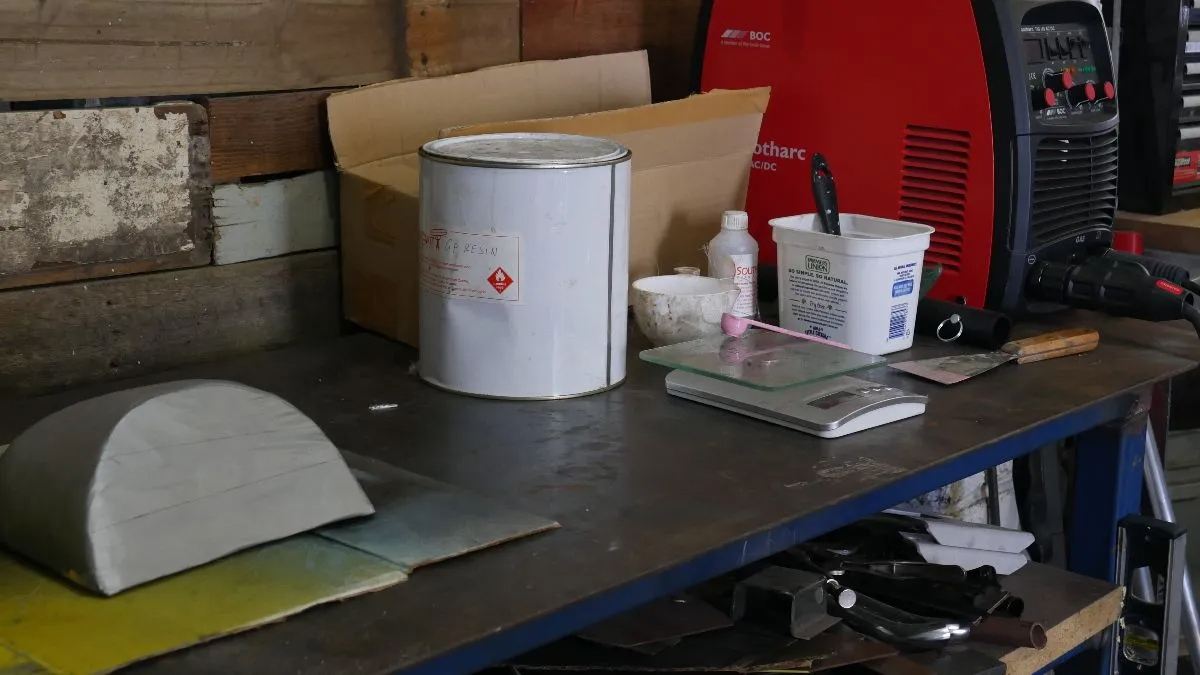
1. Sort the mounting out
In preparation for the seat pan, you need some way to fix it. The best way for my mind is to weld 2x tabs on to the frame rails and 2x M6 bolts to a piece of 15mm flat bar to suit them. On a short seat, 2 is fine on something longer you may want a third tab + bolt at the rear. If you can’t weld try to utilize some existing fixings in the seat area and instead of welding the bolts into the bar drill the holes and use a lock nut and some thread glue. Put some bees wax or release agent on the thread and set the fixing bar aside for when you’re ready to fiberglass. Here you should also think about the electrics tray and where it will mount or be welded in.
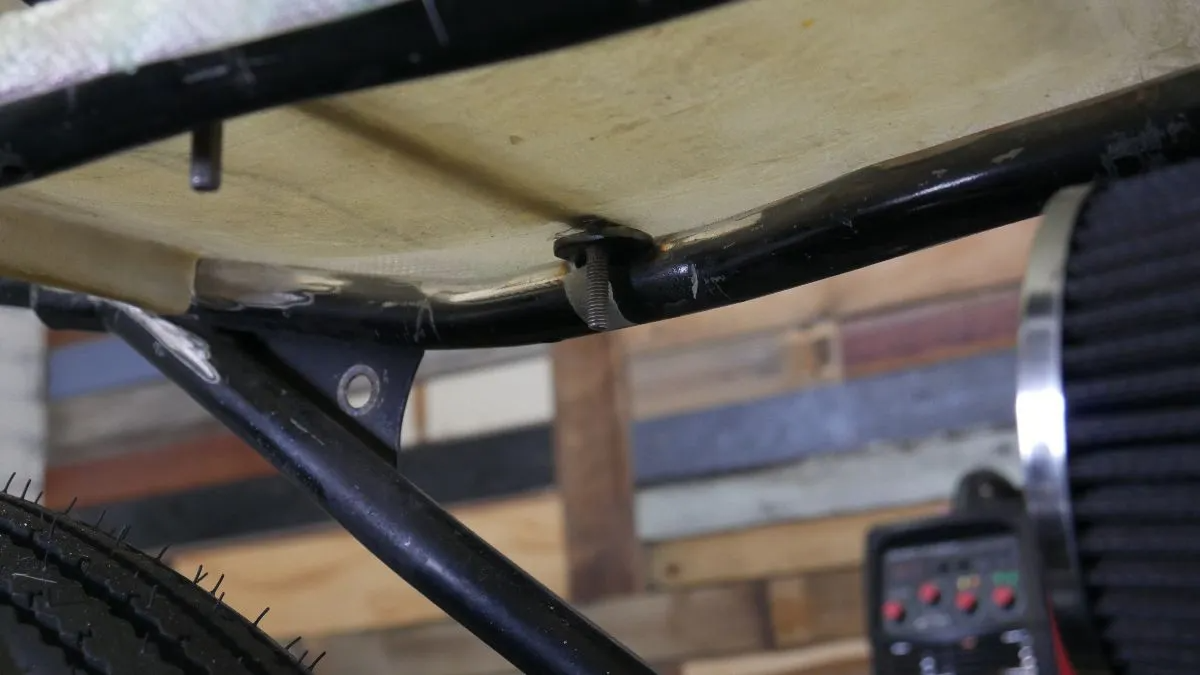
2. Lay your base down
This can be as simple as some cardboard cut out to show the shape. If you’re making a pan to sit on top of the frame rails get your shape cut out and fiberglass it on a bench. For this seat, I want to hide the frame rails so I’ll do it on the bike. If doing it on the bike I lay down some sheet metal on the area and tape it in place.
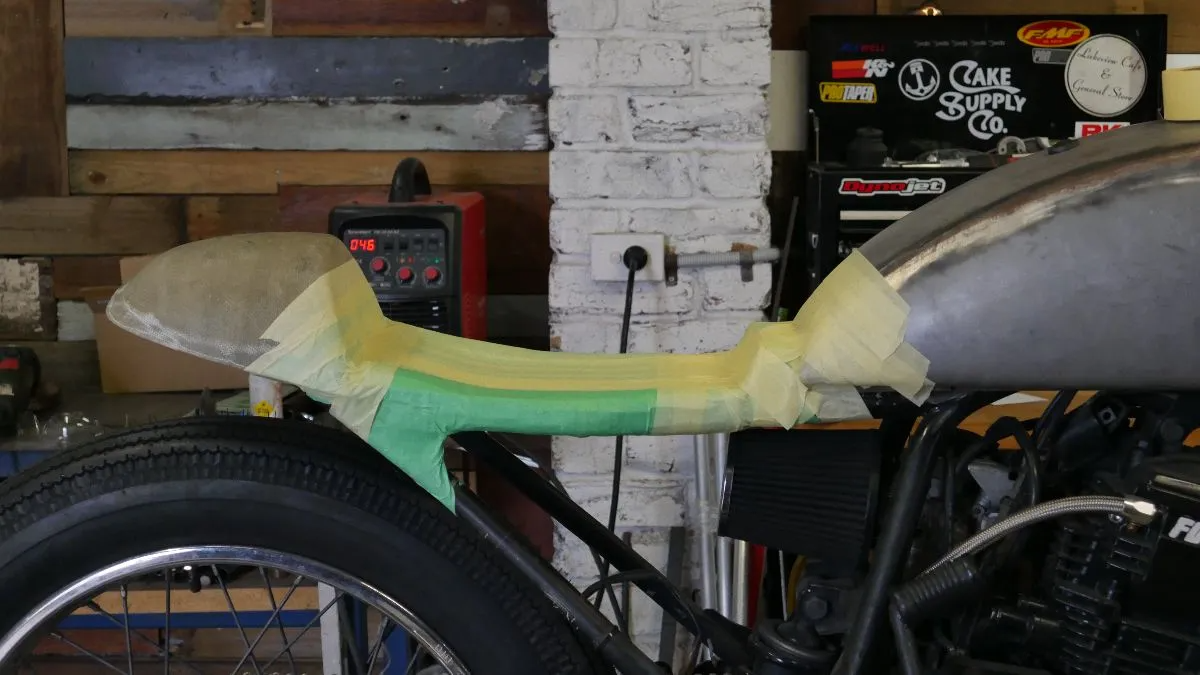
3. Cover the tail, tank and frame rails.
Make sure the area is thoroughly taped over. To cover the tank fixing section and frame rails while leaving enough room for the upholstery, I use some cardboard off-cuts taped along the frame rails and over the fuel tank bolt. This allows a small buffer for the upholstery and foam to be wrapped over and fixed without affecting the fit of the seat. When the tape is finished run over it with a thin layer of bees-wax or release agent. The final step is to mark and punch the holes for the fixing tabs.
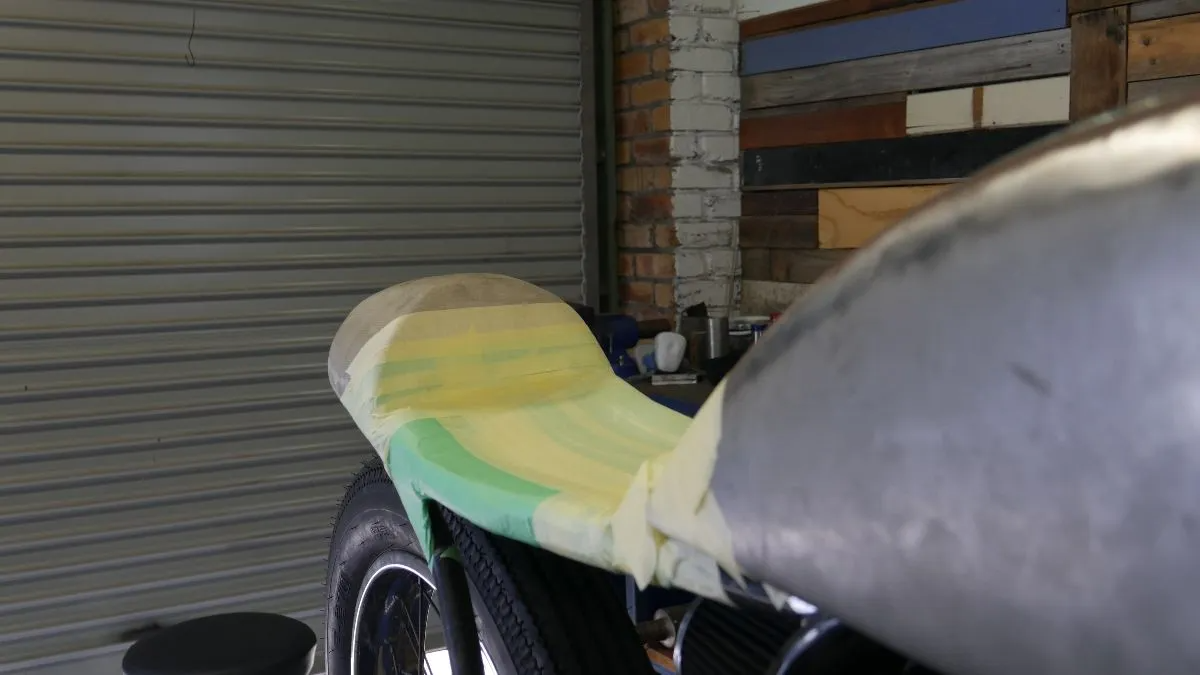
4. Prep for Fibreglass.
Cut out your matting and mask up any areas where resin may drip if finishing the seat pan on the bike. 3-6 layers here will do the trick, with your support bracket and fixing screws put in halfway through.
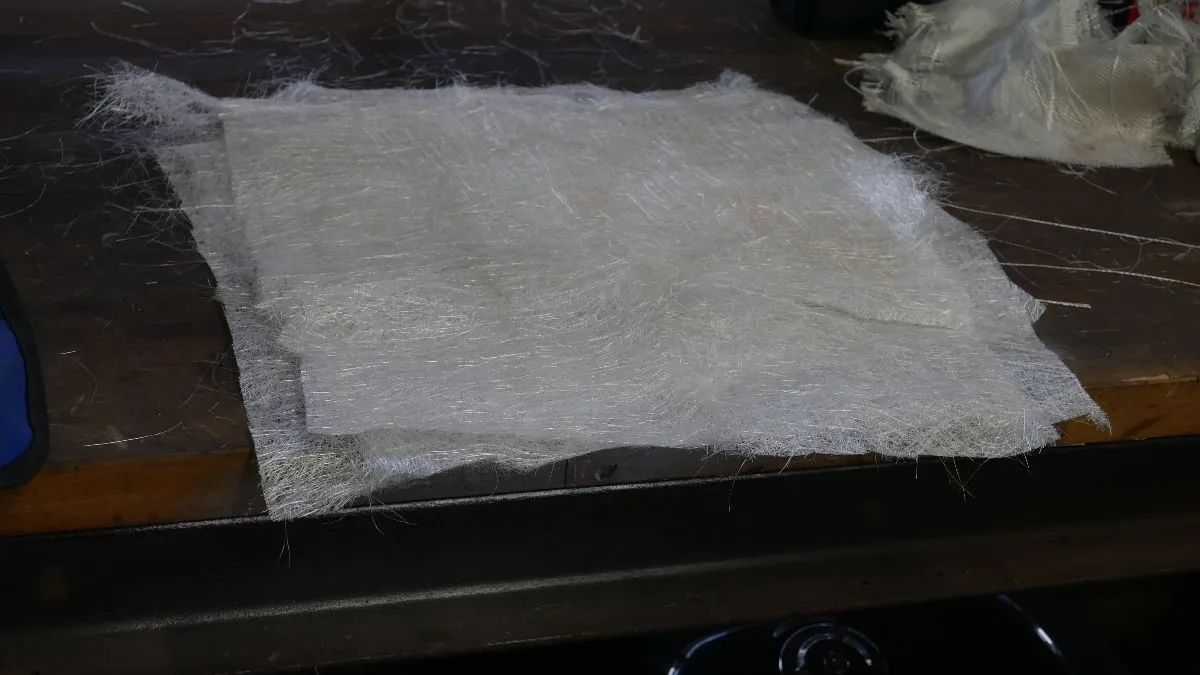
5.Time to get glassing your cafe racer seat.
Mix your resin up at 1.5-3g Catalyst to 100g GP Resin. This will differ dependant on your climate, best to ask your supplier what they recommend when you buy it. On the Gold Coast I get all my supplies from a surfboard manufacturer but general hardware stores sell fibreglass kits as well. I will usually mix up 100-200g at a time depending on the size of the piece. You want to get 1-2 layers done per mix, let it start setting then move on to the next. Each mix will last 20-40 min before starting to lump and harden.
For the first layer brush on some resin before laying the matt down, then work from the top down with your brush soaking the matt in resin and removing any air bubbles. Use a dabbing action with the brush and don’t swipe side to side as it will drag the matt and cause weak spots. In between layers, I will let the resin start to “tack off” before laying the next. On Layer 2 or 3 put in the fixing bar, lightly move aside the fibres from over the tab hole with a knife or screwdriver and put the bar in. Making sure you get another layer over the top and plenty of resin to get the air bubbles out.
You can see the resin start to get a matte look and get a little stickier as it starts to set. Let each resin mix harden before starting a new one. Repeat this until all your layers are finished.

6. Remove the seat pan and trim.
After letting the fiberglass cure 1-3hrs, remove the seat pan from the bike or bench. Take all the tape off and remove any of the support sheet metal and cardboard used. Get your safety gear on and trim the rough edges away from the seat carefully a bit at a time and use a finisher or sandpaper to finish the edges how you see fit.
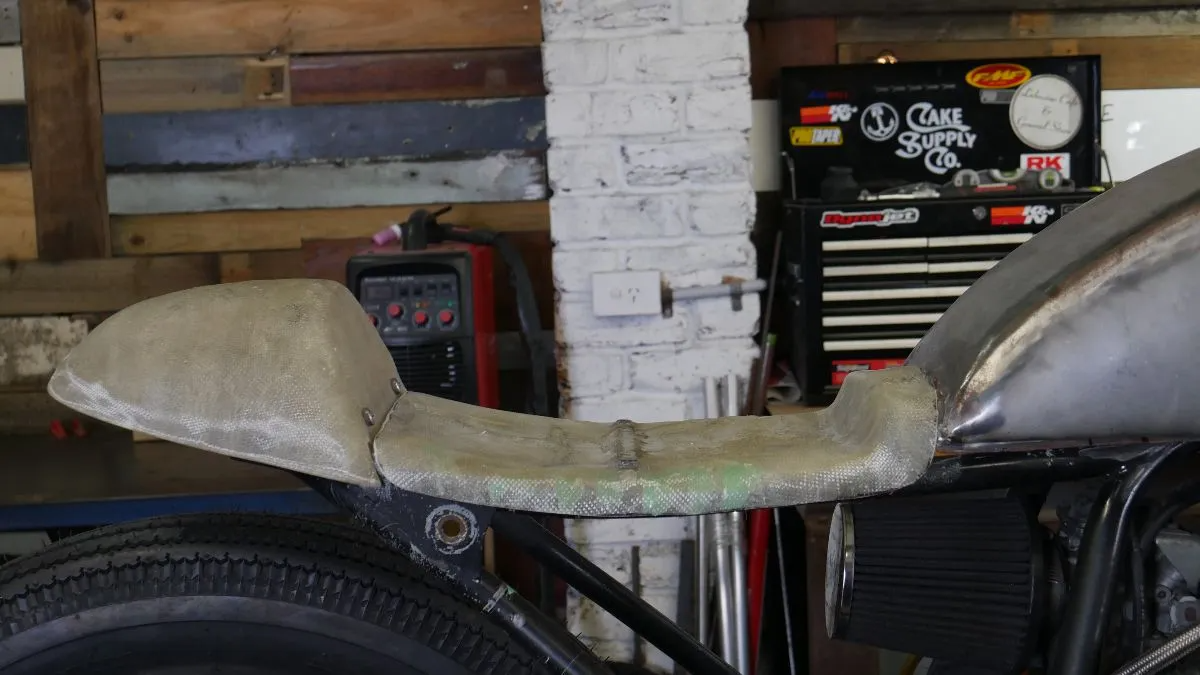
7. Get comfy.
Once sanded you should be able to sit the seat pan on the bike and fix it perfectly. It will fit with the tank style, match the frame angle and be able to be fixed down and removed easily. These are the fruits of doing it right the first time. Now cut out some foam and shape your seat. You’ll need some contact adhesive and your rasp file here. I will always glue a few pieces together, glue it to the seat pan and then trim it back to get the shape right. Always finished on the bike so it runs right with my ideas on the overall look and feel of the finished product.
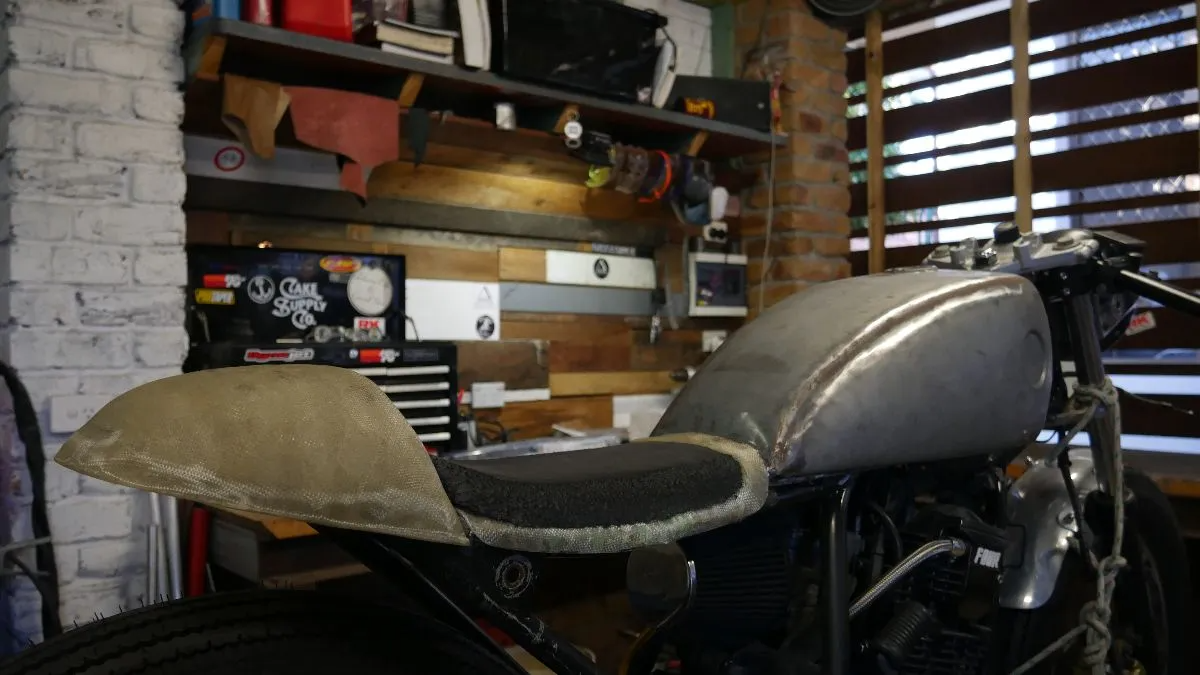
There you have it, from scratch in a few hours and as many beers as you like. A tailor-made seat for your custom café racer project. If you want to find out about making a tail cowl for your bike Click Here.
As always please leave any comments or questions below or email me. Always good to hear your feedback.
Thanks for taking the time.
Tom
WE BUILD BIKES WITH PURPOSE.
Purpose Built Moto is home for unique custom motorcycle builds. We offer a unique motorcycle customizing experience in the heart of the Gold Coast.





14 条评论
Transform your ride with these expert tips on building a café racer seat. Achieve style and comfort while making a statement on the road. Your ultimate café racer awaits
BY using your eyes and reading this article! its all covered in there.
how do you fix the new fiberglass pan to the bike?
Insanely comprehensive :)
Thank you so much,
Now I have something to read during the holidays. This will take a while but well worth it like always
You can read another one here themotorbiker
I’m
Hey Jeff,
I use a PVA release agent and bee’s wax. it works pretty well, you just have to give the part a good scrubb afterwards with soapy water to get it off.
Hi, Tom, when you glass on toppa duct or masking tape, does the tape peel right off after the fiberglass sets? Or do you spray some kinda mold release over it first Thanks! Great how to, and you make it look do-able. I’m modifying an existing seat/pan (integral) to the shape I want. I can’t really go wrong… hah hah!